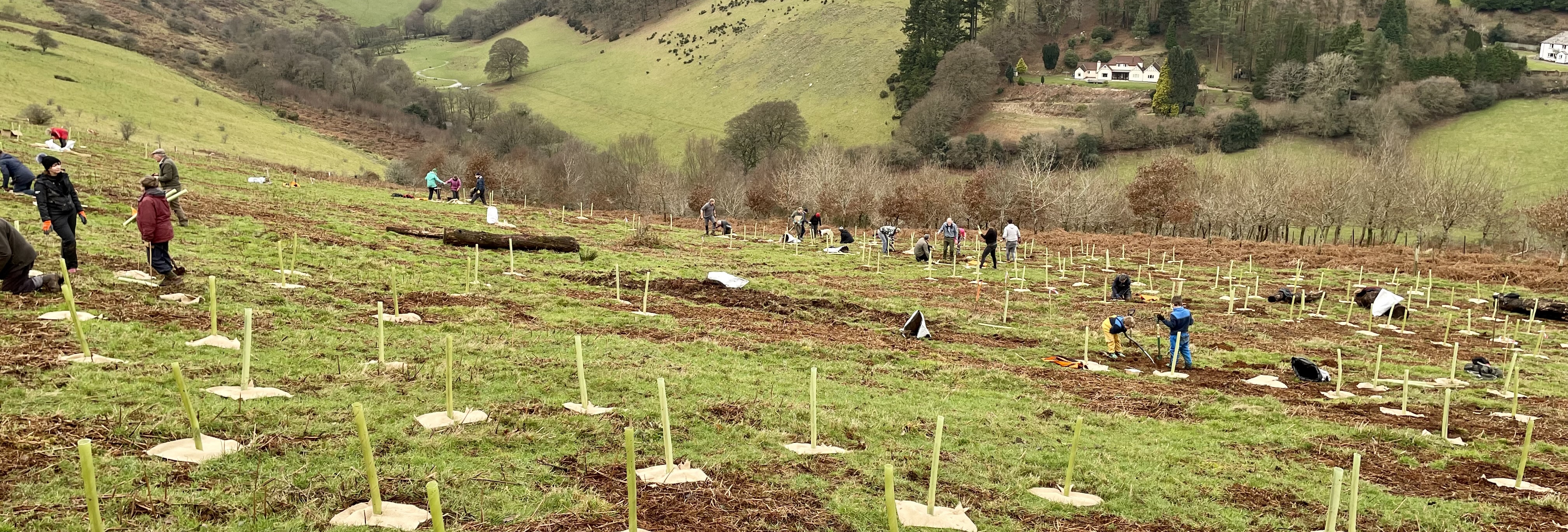Biodiversity Net Gain

What is Biodiversity net Gain?
Biodiversity Net Gain (BNG) is an approach to development and land management which aims to leave biodiversity in a measurably better state than before. Under the Environment Act 2021, it has been mandatory for all planning permissions in England to achieve at least 10% net gain since 12 February 2024 (and for small sites from 2 April 2024), with some exemptions.
BNG provision should make a meaningful contribution to nature recovery in line with the Exmoor Nature Recovery Vision and it must therefore be additional, over-and-above, other mitigation or compensation requirements such as that required for protected species or priority habitats, not just what is lost as a result of an individual development. Development likely to result in the loss or deterioration of irreplaceable habitats or protected sites will not be permitted.
Exmoor National Park Technical Guidance Note
An Exmoor specific Technical Guidance Note (TGN) has been produced to support implementation of the new BNG requirements and the delivery of the biodiversity enhancement Local Plan policy. It requires applicants to provide a minimum of 10% net gain in biodiversity for a minimum of 30 years, as set out in the Environment Act 2021. The guidance also provides information on what is required to support a planning application, and ideas on how to make a meaningful contribution to nature recovery.
What other information is available to help with BNG?
The Natural Environment Record (NER) is Exmoor’s repository for biological information, containing wildlife data collected from throughout the National Park. It includes an interactive map which can help with finding information on Exmoor’s wildlife habitats, species and designations Exmoor - Natural Environment Record. For detailed data searches please contact the local records centre (Somerset Environmental Records Centre or Devon Biodiversity Records Centre).
This flow chart has been produced by Somerset Council (and edited by Exmoor National Park Authority) to help with BNG preparation and implementation by providing an overview of the process.
Exemptions
Exemptions for BNG will apply for:
- householder applications
- permitted development
- development impacting an area below a ‘de minimis’ threshold of 25m2 or 5m for linear habitats (where no priority habitat is present)
- biodiversity gain sites (where habitats are being enhanced for the purpose of fulfilling the biodiversity gain condition for another development)
- self-build and custom build (as defined in section 1(A1) of the Self-build and Custom Housebuilding Act 2015) where there will be no more than nine dwellings on a site no larger than 0.5ha
- urgent crown development
BNG will also not apply to retrospective applications.
Enhancements
Development which is exempt from 10% BNG requirements can still make a difference for wildlife and the National Park Authority will still require biodiversity enhancements to be incorporated into development proposals in line with the NPPF and Local Plan.
The Exmoor National Park Local Plan has policy hooks in it – Policy CE-S3 Biodiversity and Green Infrastructure and CE-D2 Green Infrastructure Provision. Part 4 Conserving and Enhancing Exmoor (exmoor-nationalpark.gov.uk). There is also a Local Plan Summary Local Plan 2011-2031 Summary (exmoor-nationalpark.gov.uk). Enhancements should be in line with these existing Exmoor National Park Local Plan policies.
Requirements and thresholds for enhancements for applications which are exempt from BNG are set out in Appendix 1 of the Technical Guidance Note.
Habitat banks
A habitat bank is a site where habitat creation is secured, delivered, managed and monitored long term in accordance with the requirements for BNG, for the purpose of delivering biodiversity units required by other development proposals. The habitat bank is registered on the national register. Developers then enter into contracts with the habitat bank provider to buy units necessary for their development. Habitat banks are therefore new wildlife habitats which are created on the basis that costs can be met through selling biodiversity units to developers. They are set up at the owner’s risk and in an open marketplace for purchasing biodiversity units. They need to be secured by legal agreement with the LPA using S106 of the Town and Country Planning Act 1990 (as amended).
Exmoor National Park Authority welcomes expressions of interest from landowners who are considering setting up a habitat bank within the National Park. However, entering into S106 agreements for habitat banks is discretionary and ENPA will apply criteria to proposals in order to decide which ones (if any) to support. These criteria are outlined in Appendix 2 of the Technical Guidance Note, with some additional detail provided on the process of assessment (see section 2.5 of the TGN).
Where can I get further information or advice?
A range of resources has been produced nationally to help with understanding BNG and the new requirements including a number of videos Biodiversity Net Gain for local authorities | Local Government Association
Pre-application discussions are an important way to ensure that the development that comes forward is high quality and complies with local plan policies.
For further information or advice please do not hesitate to contact us on 01398 323665 or via plan@exmoor-nationalpark.gov.uk

